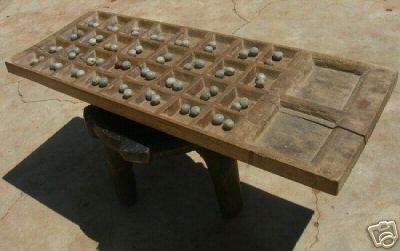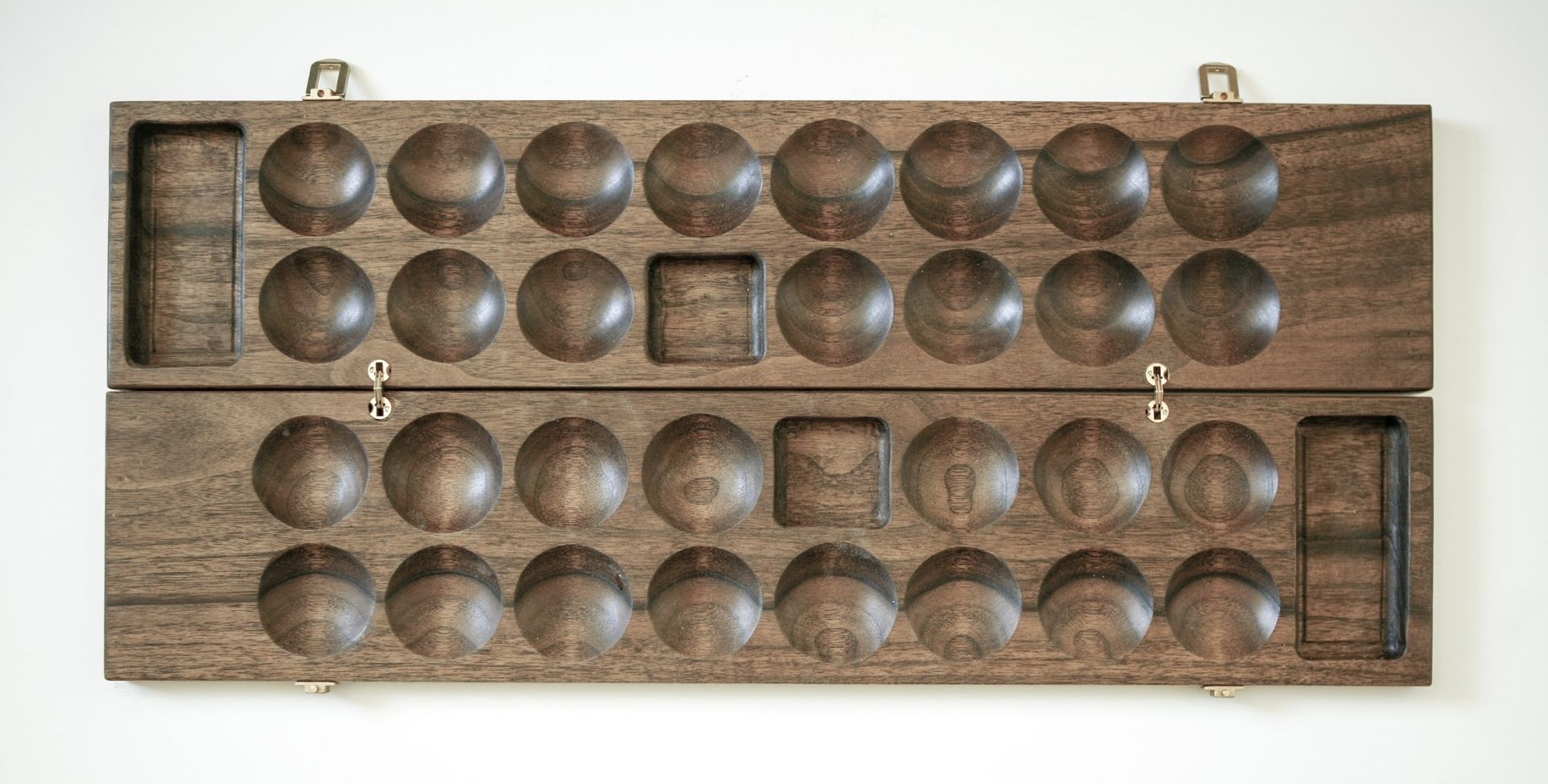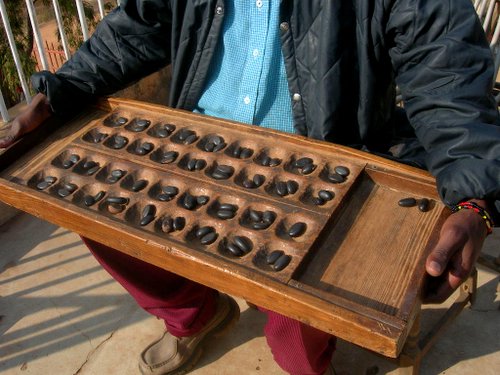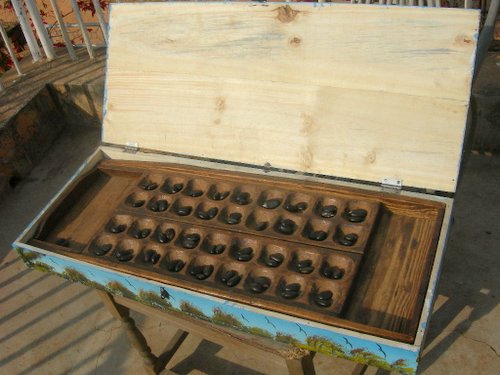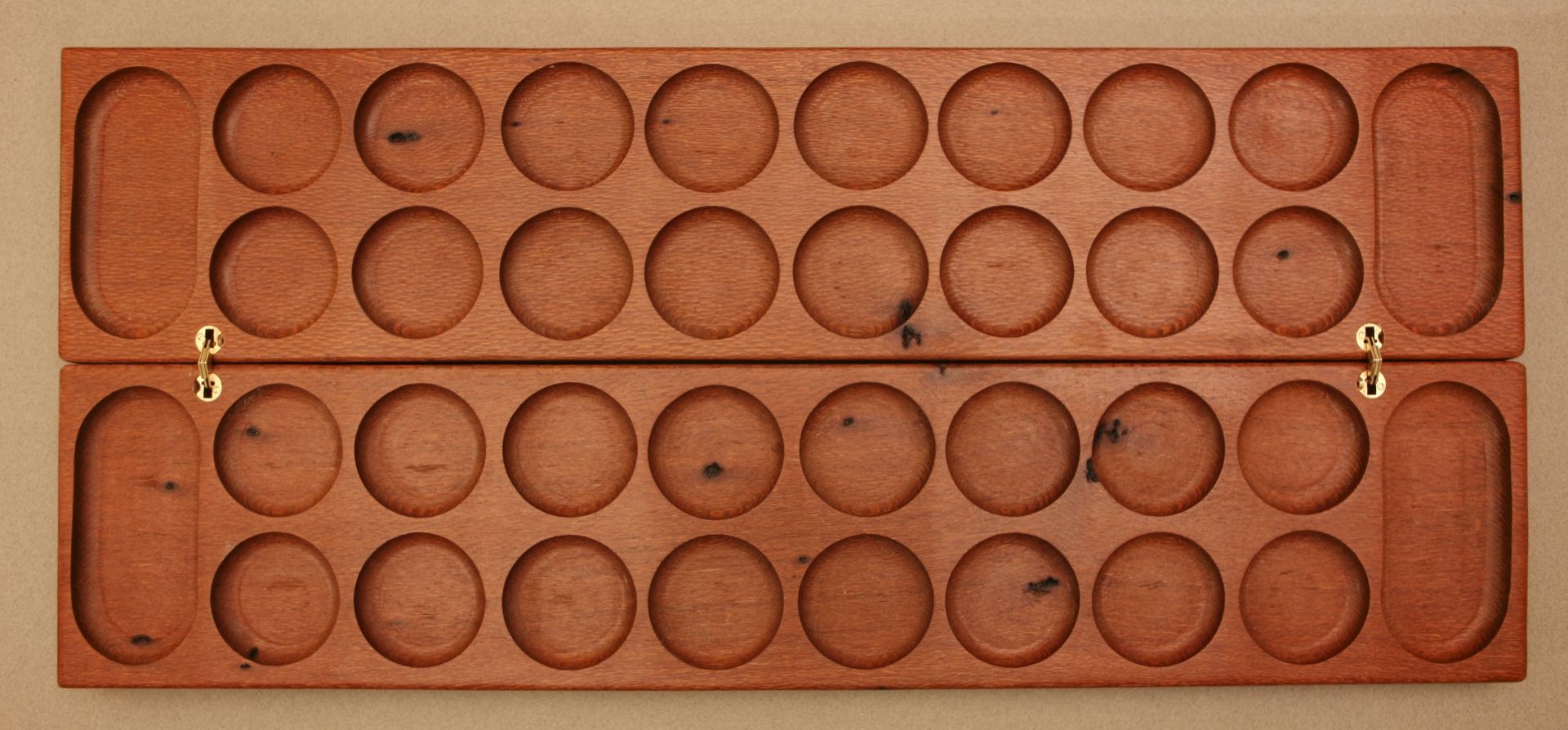Bao (mancala game)
Bao is a Mancala game from Africa. It is played in some East African countries (including Tanzania, Kenya, Malawi, Burundi and eastern Congo ). In Malawi, it is also known under the name Bawo. Most Popular it is among the Swahili of Tanzania and Kenya. The word bao is, Brett ' in Swahili.
Some call Bao "King of the Mancala games", because it is considered the most difficult and most complex of them.
There are several variants of Bao. The complex is called Bao la Kiswahili ( " Bao of the Swahili "). Bao la kujifunza ( " Bao for beginners ") is a simplified version of the Swahili - game. Bao la Kiarabu ( " Bao of the Arabs ") is an even simpler variant, which comes from Oman, where it is known as Hawalis. The game " Omweso ", which is played in Uganda, uses a similar board and stones such as Bao and has similar rules.
In Zanzibar, the master of the game are highly respected. There are clubs and Bao- Bao masters who fundi (artist) or Bingwa ( expert) called. Official Championships will take place in Zanzibar, Kenya and Malawi. Also in Europe tournaments are organized.
Game Accessories
A Bao- board generally consists of polished wood. A Bao- board has 32 wells ( called Mashimo, " bowls"; Sing shimo ) in a 4 × 8 layout.
64 game balls, " seeds " (32 per player), are used. This the nutty fruits of Mkomwe plant ( Caesalpinia bonducella ) can be used to Zanzibar, whose freely movable core disabled from rolling the ball. This is the same game accessories, such as it is used for a large group of Mancala games, especially in Omweso (Uganda) and its many variants; can usually boards, which were specially made for Bao, be recognized by the fact that two wells ( nyumba called "houses" ) are the form of the other (usually rectangular ).
Aim of the game
The objective of the game is to clear the front row of the opponent or to take him any further opportunity to set (if any of his holes has more than one token more).
Game rules
NOTE: Following the translated Zanzibari original terms are used
The game is played by two players ( North and South).
The assignment is listed at Bao by the numbers in the following scheme:
The 0 unoccupied holes symbolize and the single lower and upper number represents the seeds in the camp.
On the board, there are five types of wells
- X: bearing ( Ghala ) (for the seeds in the first phase of the game )
- #: House ( nyumba )
- &: Head ( kichwa )
- %: Place ( Kimbi ) - by Townshend (1979 ), the kichwa also referred to as Lamu Kimbi.
- 0: normal troughs
Main principles
The start-up phase ( Kupanda = sowing)
At the beginning of 20 seeds as follows are distributed on the board:
Every 22 seeds remain for every player in the camp (or in hand ).
In the initial phase each a seed is sown in a trough of each player. This phase of the game is called Namua phase. If you win in the Namua phase, called this Gewinnart mkonomi ( " in hand " ), because seeds are still left in the hand seeding.
In this phase, the player takes a seed from his hand and planted it in a non- empty hole of his front row. He has the seeds of his opponent in the associated trough "eat" ( he takes the seeds and plant them straight on to its side a ). The food is mandatory.
So you can eat the seeds of the opponent, three conditions must be met:
- There must be at least one ball in the hollow of one's own front row
- Balls it must be in the front row opposite the enemy
- You put a bullet in this hollow of the front row
In various planting options you have to choose the one where you can eat opponent's seeds.

